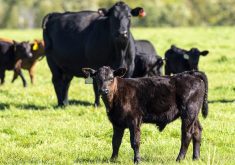Glacier FarmMedia – Wool might be a secondary market for the Canadian sheep industry, but the COVID-19 pandemic still cut deep into the business as the textile supply chain ground to a halt, according to the country’s wool co-operative.
Eric Bjergso, general manager of Canadian Co-operative Wool Growers, said 2020 was the most difficult year he’s seen “for the wool industry worldwide, actually,” said Bjergso. “It’s not an isolated Canadian situation.”
The co-op collects and grades about 90 per cent of Canadian wool at depots throughout the country before it is graded and sold. The producer-owned organization provides an initial payment for the product on delivery and a final balance upon sale.
Read Also

Canada seventh-most influential country on agri-food
Report from Dalhousie University and MNP shows Canada ranks seventh among G20 countries on agri-food influence.
Why it matters: Demand for wool by clothing manufacturers has dropped due to the pandemic, but opportunities exist for wool to replace petroleum-based synthetics.
The wool industry was already in a fragile state due to ongoing trade sabre-rattling between the United States and China, said Bjergso. That appeared to be settling down just before the pandemic.
“And COVID-19 has been far worse,” he said.
Clothing retailers were forced to close during the pandemic, only to open in fits and starts as public health restrictions allowed. That slowed demand to a trickle.
“For raw wool sales, some of the markets closed down completely for a while. The Australian auction was the only one that kept going. But even it, for a while, looked like it would have to (close),” said Bjergso.
In a story familiar to many international supply chains rocked by the COVID-19 crisis, closed shops led to reduced demand and forced wool industry contracts to be cancelled.
“It’s been quite a mess. It’s still a mess really,” said Bjergso, adding that new clothing has not been a priority for many working from home. “So we’ve really been impacted quite significantly.”
Canada remains a small producer of wool on the international market, producing about three million pounds annually. Even with annual production of 25 million lb., the U.S. is considered a small player in the industry dominated by Australia and New Zealand.
The fine wool market has fared better than medium to coarser wools, according to Bjergso, but the latter is what Canada produces and the overall inventory surplus for that product is large.
“It’s going to take some time to work itself through for sure,” he said.
There has been one bright spot for the wool sector, which has seen much of the textile industry moved offshore while also facing pressure from greater use of synthetic materials.
The recent trend to COVID-19 forced home activity led to an uptake in knitting, and that has continued to drive the domestic market and maintained a handful of early-stage wool processors.
“People with more time at home, knitting is becoming more popular and wool blankets are always a good item so they have their niche in the marketplace.”
Bjergso said he would like to see the domestic wool industry provide more education so consumers obtain a better understanding of the textile.
“We haven’t done a very good job as an industry teaching the public about all the desirable characteristics of wool like our previous generations have done,” he said. “The synthetic generation basically just took over and wool became a casualty of that.”
In a world looking to move away from oil-based products, wool could provide an option to synthetic textiles made from petroleum, added Bjergso.
–This article was originally published at The Western Producer.














